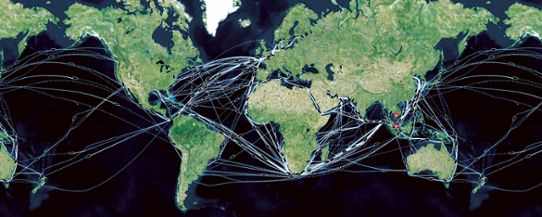
SMHI’s marine meteorologists guide vessels all over the world day and night. They analyse the most suitable route based on the vessel’s characteristics, load, winds, waves and currents. The aim is to support both the captain on board and the person on dry land who is giving instructions to the vessel, in order to ensure safe and energy-efficient transport.
Transparent systems - less collisions, less queues

“Safety, the environment, time and money are what is important to shipping companies. At SMHI, we have extensive experience of working with both shipping forecasts and the analyses of completed shipping routes. STM is based on standardising the exchange of information between vessels and land. This makes it easier for SMHI and all of the other service providers in the maritime sector. The goal is a transparent system, which helps the vessels, companies, ports, terminals, authorities and other stakeholders to know where ships are, and what their planned route is,” explains Lennart Cederberg, Segment Manager for shipping at SMHI.
The key concept of STM is sharing the information about what is going to happen in the coming minutes, hours, days and weeks with other players. With a transparent system we can minimise the risk of collisions as well as congestion in ports, for example, by adjusting the speed and arrival time much better than we do today.
“With the help of SMHI’s system, we simply know how much to accelerate to arrive safely and on time, while being more economically and environmentally efficient,” says Lennart Cederberg.
“Take Rotterdam for example, Europe’s biggest port. There are 140 terminals, and 30,000 vessels call at the port every year. With the help of STM, it is possible to coordinate so that vessels run fast enough to arrive at the right terminal at exactly the right time and know exactly when they can unload, instead of waiting anchored far outside the harbour and waiting for a space to become available,” Lennart Cederberg explains.
More secure forecasts
During the next year, some thirty vessels from SMHI’s existing customer base will test STM. The vessels will receive SMHI's route recommendations in digital format directly on the electronic navigational chart.
“SMHI’s ensemble forecasts with fifty different estimates of the effects of weather on speed and fuel consumption provide a good picture of how safe forecasts are. The safer the forecast, the greater the opportunity to optimise the vessel's route at the beginning of a long journey across the Atlantic or Pacific,” says Lennart Cederberg.
It is hoped that STM will become the European standard, before becoming the worldwide standard.